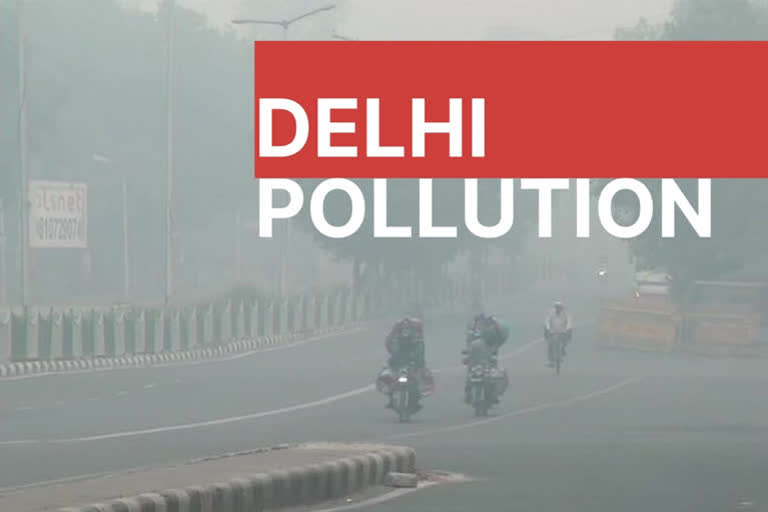Hyderabad: The lives of people are negatively impacted by air pollution and deterioration of air quality standards. The current situation in the national capital Delhi is proof of this. The environment is facing serious risks due to human beings’ reckless consumption of natural resources.
An international committee comprising of 153 countries and 11,258 scientists declared a climate emergency.
Unseasonal rains, floods, droughts, earthquakes, tsunamis, increasing global temperatures, rapidly melting glaciers, rising sea levels will severely affect the environment, causing adversities.
Under the guise of industrialization, urbanization and development, deforestation is disturbing the nature’s balance. In the earliest days of human civilization, man used to be a hunter-gatherer.
In the course of the development of the human race, men started destroying nature for his needs. Reckless emission of greenhouse gases into the environment is polluting the air, water and food. The dangerous levels of Air Quality Index (AQI) in Delhi and its surrounding areas are raising alarm.
Though geographical conditions play a small part, man-made factors are major contributors to this menace.
Diwali firecrackers and burning paddy stubble led to an alarming 500-point AQI in Delhi. It is considered dangerous if the AQI is anywhere between 400 and 500.
The Pollution Control Board stated that AQI above 500 is highly hazardous. With deteriorating air quality, day-to-day life is affected in Delhi.
Also Read: Air pollution: Delhi-NCR schools reopen today
People are not venturing out without face masks, which reflects the dire situation. Not only Delhi but also Gurugram, Ghaziabad, Noida, Faridabad are suffering from air pollution.
Maharashtra, Odisha, Chhattisgarh and Telangana are some of the states which bear the brunt of toxic emissions. Climate changes have worsened the already prevalent peril. Along with winter fog, emissions from vehicles, industries and farms are suffocating the people.
Punjab and Haryana, which are Delhi’s neighbouring states are agriculturally developed. The crop production is high in these two states, so is the burning of crop stubble.
Generally, burning a ton of crop stubble emits 60 kilograms of carbon monoxide and 1,400 kilograms of carbon dioxide. 3 kilograms of micro dust particles, ash and Sulphur dioxide are additionally emitted into the environment.
Annually, half of the burnt crop remains belong to Punjab, Haryana and Uttar Pradesh, thus negatively impacting Delhi. The effects are doubled during the winter season.
Crop burnings cause a decline in land fertility. Beneficial microorganisms are being destroyed due to reckless crop burnings. Moisture content in the land is decreasing, leading to a reduction in crop production.
Though the National Green Tribunal instructed against stubble burnings four years ago, no one paid heed to it.
With environmental destruction, temperatures will rise globally. Air pollution will be rampant. There is a 23 per cent rise in deaths nationwide due to air pollution.
The reports of the Indian Medical Association clearly stated that 1 out of 8 people are dying due to polluted air.
Also Read: Envt ministry to hold high-level meeting over air pollution today
AIIMS had warned that there will be a rise in pulmonary and cardiac diseases in places like Delhi, where air quality is compromised.
Among the 180 surveyed countries for AQI, India stood last. Two-thirds of Indian cities turned into gas chambers.
Instead of burning the crop remains, alternative methods must be implemented. Using crop stubble as fuel in conventional energy systems can reduce the incidence of burnings.
In places where air quality is worse, farmers must be encouraged to cultivate millets instead of paddy and wheat.
To curb the emissions from vehicles in Delhi, a more effective method than the even-odd system must be considered. Public transportation must be strengthened.
Strict measures must be taken against those industries which emit toxic wastes. The society must be made aware of the harmful effects of pollution.
The AQI is excellent in nations like Australia, Barbados and Canada. India must follow the lead of such countries and take the necessary steps towards implementation.
Also Read: Delhi! Devoid of clean water, pure air



